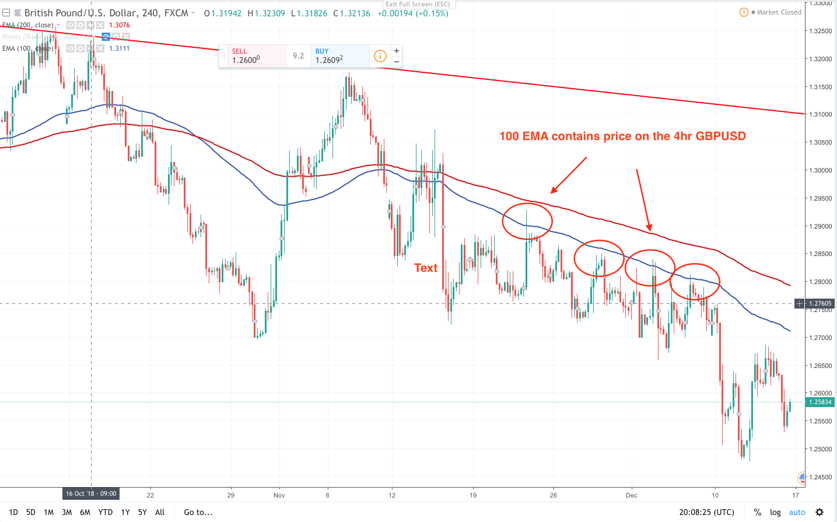A look at the different factors influencing the number of trades one makes

Well, how often should I expect to trade?
One question that many beginner traders ask is, 'How many trades should I take each month?' It is obvious why it is asked as traders are trying to calculate what their potential gains might be from trading.
Also, being aware of the dangers of overtrading, and wanting to avoid that, the obvious question arises, 'well how many trades should I be taking each month'.
The number of trades taken depends on a number of different factors
The answer to the question, 'how many trades should I be taking each month' is, 'it depends'. That might sound like an unsatisfactory answer but this article will show you some of the most significant factors which determine how many trades you should be taking each month.
Three of the most relevant factors include: Market dynamics, trading timeframe, and entry style'.
Market dynamics
Just as not all weather is good for sailing, so too not all market dynamics are good for trading. The market dynamics will dictate the number of trades that you take each month. The best type of trades that you are looking for is trades that have a high conviction level.
You find these high conviction level trades by finding shifts in sentiment or fundamental analysis. For example, say the Federal Reserve had just indicated to the market that it is going to scale back its intended pace of interest rates in 2019, then we can expect to see USD selling.
Now, say that at the same time we are entering a 'risk-off' mode and the Nikkei index has sold off -2% on the news of a renewed opening in the US/China trade war, then we can expect to see USD/JPY selling off.
This would be a high conviction trade to look at taking. Now, not every day will provide a high conviction opportunity. So, the obvious trades don't come along all the time. A recent real-world example has been the GBP/USD pair.
Over the course of the last few weeks there has been a near constant sell sentiment for the pair. On the 4hr chart below each time the 100 EMA has been tested price has sold off from that level. There could have been four trades taken on the 4 hr chart during November and December that offered high conviction trades.

In fact, the sentiment was so bearish with GBPUSD and Theresa May's bungled Brexit plans that traders would have been looking for trades on the lower timeframes too. In fact, at the time of writing GBPUSD bearish sentiment remains. See below here for pivot point opportunities on the 1-hour chart.

The upshot of this is that the market dynamics (a strong GBP sell sentiment) has meant that savvy traders will be looking to short the GBPUSD pair as long as this sentiment remains. How many trades will this provide?
Who knows? However, the old saying, 'Make hay while the sun shines' springs to mind as the market presents a great opportunity. Trade as long as the decent chances are there.

Trading timeframes
The timeframe of your trade will also affect the frequency of your trades. For example, if you are trading from a higher timeframe, such as the daily, weekly and monthly chart then you will be trading less trades per month than if you were trading the 15-minute charts.
An intraday trader may easily be taking between 1-3 trades a day on the lower timeframe. If that was the case then an intraday trader might expect to be making somewhere between 20-60 trades per month.
Of course, this is only a rough guide, with individual traders potentially trading more or less than this. However, it does give you an idea of what an intraday trader's trade frequency might be. By contrast, a trader who only uses the daily timeframe and above, may be trading between 4 and 15 trades per month as a rough guide.
The general rule of the thumb is the higher the timeframe, the less trades you can expect to trade per month.
Entry style
This is the final aspect that may impact the number of trades taken per month. Some traders will scale their positions in. Say for example a trader is going to trade 5 lots on US Crude futures. They might divide that 5 lots into separate units of 1 lot.
They might enter one lot at 50.50 cents, another at 50.60 cents, and the remaining lots at increments of 0.10 cents. In this instance the 'one trade' has been broken down into 'five separate trades'. Obviously, a trader who regularly scales their positions in will be taking more 'trades' per month than a trader who doesn't.
How many trades you might typically expect to trade per month
In summary, an intraday trader can expect to trade between 20-60 trades a month and a swing trader somewhere between 4 and 15 trades per month. Obviously, if you mix styles of trading together, like intraday and swing trading, then you can expect to achieve a figure that allows for that.
On a different note, some algorithmic trading will reach hundreds of trades per day. This would mean thousands of trades per month. So, there you have it, a rough guide to the number of trades that you will expect to take per month and the reason why you can't pre-determine the number of trades due to changing market conditions and trading styles.
- This article was submitted by Instaforex.




